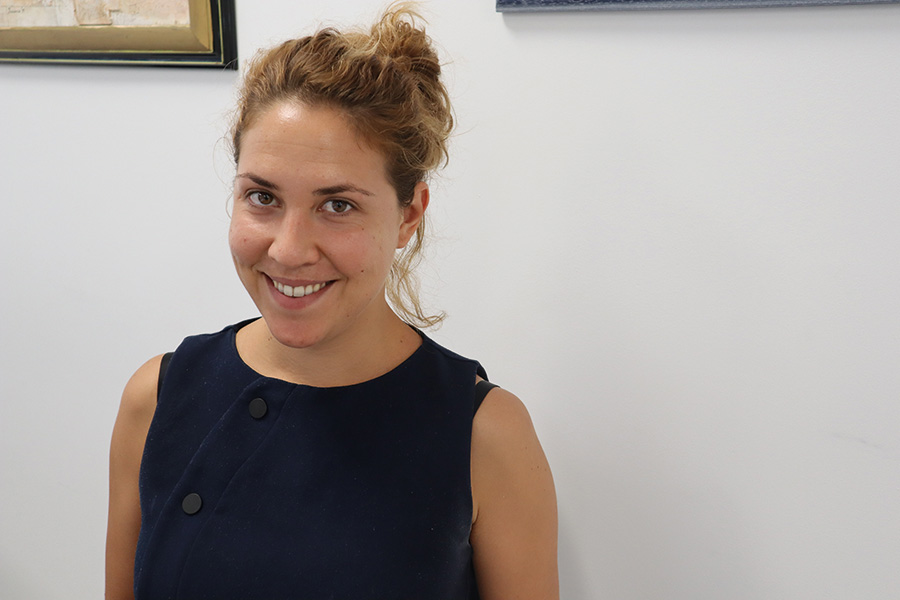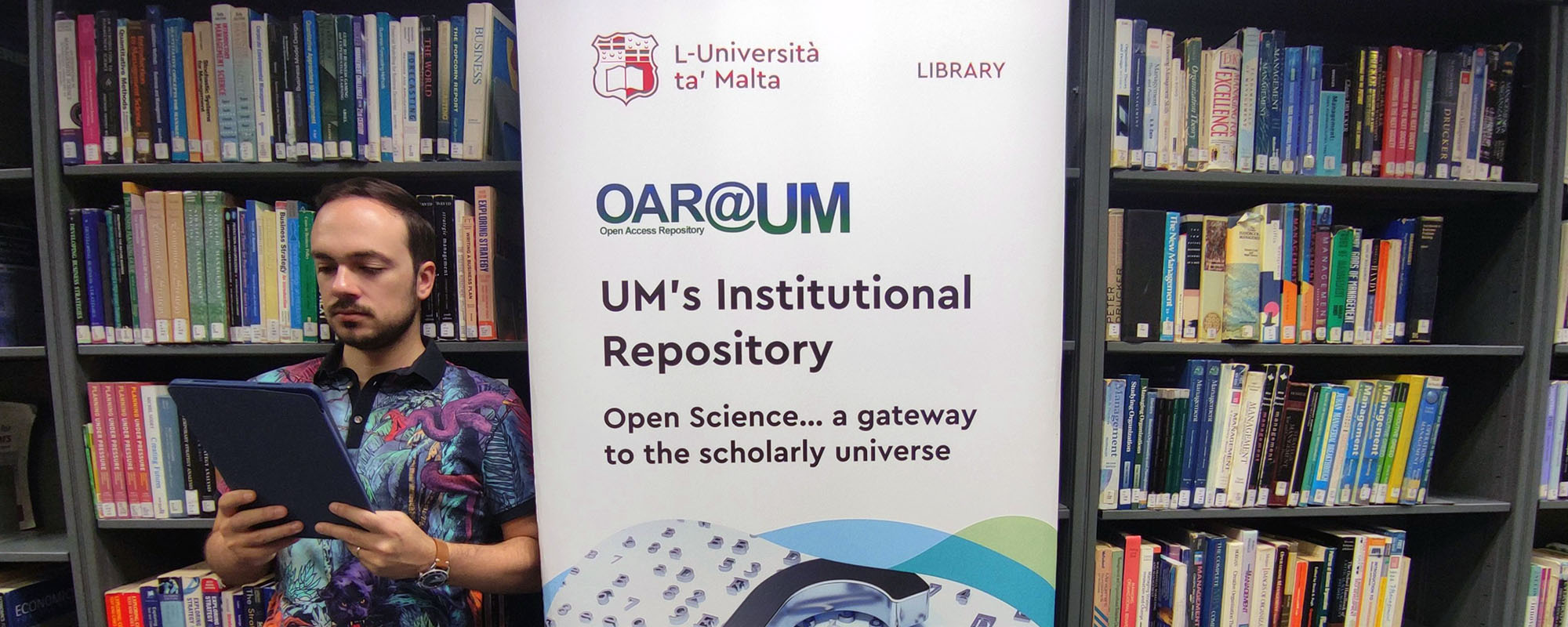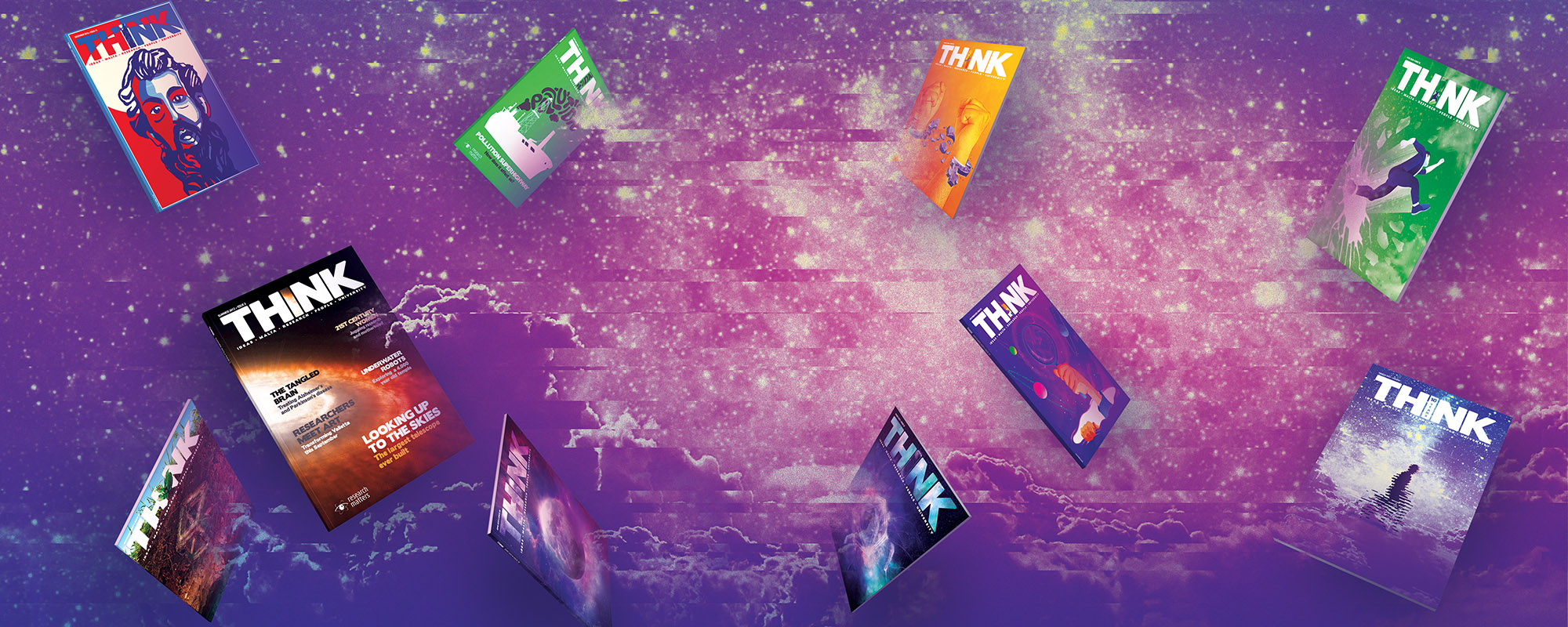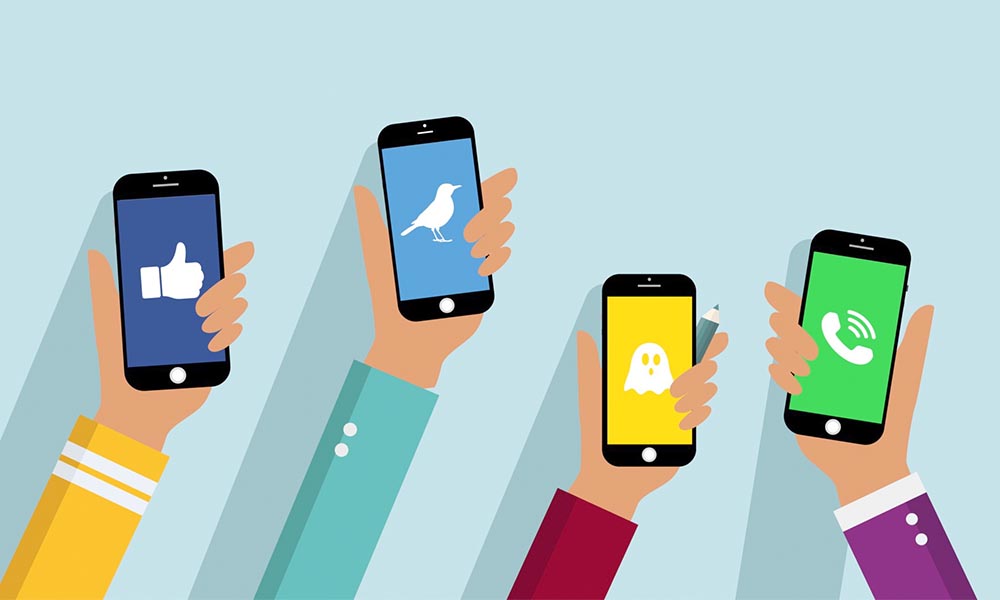Getting on the property ladder is incredibly difficult. Unless you are fortunate enough that your parents already own several properties, you will most likely be stuck for the rest of your adult life paying off your first (and possibly only) one-bedroom apartment. Is this grim future set in stone, or are there more creative solutions?
Continue readingA Decade of Open Access at UM
This year marks a significant milestone for UM as we celebrate the 10th anniversary of OAR@UM, the University’s Open Access Repository. Its role reflects UM’s commitment to enhance the visibility and dissemination of research output generated at UM.
Continue reading3D Printing Balloons Inflates Enthusiasm for Future Technology
With the rise in popularity of 3D printing, the medium has become more accessible. What’s more, recent advancements in the field have made the technology rather intriguing. THINK explores the latest UM research on the development of 3D-printed balloons.
Continue readingWhat Happens to Malta’s Private Collections?
Natalie Formosa shares her findings on private artists’ archives in Malta and the nation’s role in preserving such collections.
Continue readingGreen Walls: A Sustainable and Innovative System to Reduce the Impact of Pollution
In cities, pollution remains a pressing environmental concern for pedestrians. THINK sits down with Prof. Ing. Daniel Micallef and Dr Edward Duca from UM, who are using plants and physical barriers to combat traffic-generated pollution.
Continue readingHistory of THINK
How much do you know about the history of THINK? If you’re a THINK superfan, then you know that the first edition wasn’t called THINK. Read on to learn more about how THINK evolved over the last decade.
Continue readingCovid and the Elderly
Elderly people in residential care homes have been particularly affected by the pandemic and the safety measures associated with it. Isolation, loneliness, and the lack of physical touch are a few factors that have impacted their mental well-being.
Continue readingLet’s not panic about our teens just yet
The benefits of research can be lost if we amplify only one argument in a nuanced, complex topic. How youth interact with social media is as complex as it gets. Dr Velislava Hillman, director and senior researcher at Data, Media, and Society Research Centre, Malta, writes.
The COVID-19 pandemic kept many children and teenagers at home, with parents struggling to recreate routine. Yet with or without public health risks, teenagers’ social media use was shrouded in moral panic and gloom. Mainstream media headlines do not help; take ‘Social Media Creates ‘Instant Loneliness’ for teenagers’ and ‘Loneliness: An Epidemic In The Making?’. All too often research and policy looks at risks separately from opportunities.
In Malta, this division happens often. Run-of-the-mill surveys bring out numbers without context. Left in the hands of hungry news writers, these numbers can lead to uncontrolled and wild interpretations that raise unnecessary fear in readers. The truth is that there is no clear evidence of any causal relationship between loneliness and social media use. Young people – and many adults too – do feel social or emotional loneliness, but the real reasons remain elusive. To give a more balanced approach to social-media-induced loneliness among teenagers, here are five questions to ask before allowing any concern to seep in.
The truth is that there is no clear evidence of any causal relationship between loneliness and social media use. Young people – and many adults too – do feel social or emotional loneliness, but the real reasons remain elusive.
Firstly, what’s the evidence? Comparing the findings of a quantitative study on loneliness carried out by the faculty of Social Wellbeing at University of Malta and its coverage in the mainstream media, the gap is striking. There is no solid proof that teenagers suffer ‘instant’ loneliness, let alone that social media causes it. The study found that loneliness tends to particularly affect older people with lower education, unemployed and retired individuals, and those living alone (a bit of a giveaway), among other factors. A person’s risk of loneliness, the study summarises, ‘is reduced if they: form part of a younger age group; are highly educated; are in employment; are of a single marital status; live with their parent(s) or guardian(s)…’ etc.
A third of the teenagers (ages 11–19) who took part in this survey said they experienced some sort of loneliness (with no connection to social media whatsoever). The survey (a method that has its own limitations) included 115 teenagers in total. While the research instrument has a unidimensional overall loneliness measure, it prevents researchers from understanding why the survey participants responded as they did – which may be a result of temporary bias (e.g. unique life events, having a stomach ache, or responding right after a fight with a friend).
The second question is: who is interpreting the results (researchers, journalists, parents, NGOs who need funding to carry out their work)? Mainstream media covered similar studies in the past (e.g. studies on youth and online gaming), as they make a compelling read even when evidence is inconclusive. But while the intention may be to create awareness, inflicting moral panics will not provide the support that is necessary in these situations.
The third question to consider: when does feeling lonely become problematic? A headline such as ‘Loneliness: An Epidemic in the Making?’ sounds as though feeling lonely is somehow wrong. The referenced study by the Faculty for Social Wellbeing highlights that it is OK to feel lonely. And while presenting the number of people who said they feel ‘moderately lonely’, the findings do not make claims about the cause or length of such a feeling.
Fourthly, are social media users seen as passive consumers or as complex individuals? Scary headlines of media articles (as quoted above) or books (like Jean Twenge’s iGen: Why Today’s Super-Connected Kids Are Growing Up Less Rebellious, More Tolerant, Less Happy or Adam Alter’s Irresistible: The Rise of Addictive Technology and the Business of Keeping Us Hooked) create a dangerous bandwagon. The media has been heavily criticised for construing children and young people as a passive audience of media messages, carried away by content that adults somehow seem immune to. However, children have their own moral compass; they detect liars like no other device can, and show resilience when faced with an adversary. Examples galore: from Pocahontas to Malala and Taylor Swift (with her support for LGTBQ rights and speaking up against sexual harassment).
Of course, accepting youth as ‘tech savvy’ is another extreme to avoid. The point is to not segregate audiences, grouping them as ‘addicted’ or ‘digital natives’ or ‘lonely’, but to reveal all evidence with its accompanying limitations and drawbacks and to emphasise the nuances that exist among usage patterns, perspectives, and individuals.
The media has been heavily criticised for construing children and young people as a passive audience of media messages, carried away by content that adults somehow seem immune to. However, children have their own moral compass; they detect liars like no other device can, and show resilience when faced with an adversary.
Finally, what’s the point of creating moral panics? NGOs and mainstream media make every effort to create awareness, to help raise awareness of existing problems, and to make improvements in society. This is great. However, such work also relies on external funding – for selling shrinking newspapers, running educational and support programs, for conducting further research. Amplifying complex issues that are far from being clear-cut builds upon that same dangerous bandwagon. Generalising and turning survey responses into sensationalised headlines is never productive.
An average family will never spend a whole day reading academic work to understand what exactly has been discovered. All institutional actors, media, and stakeholders concerned about young people’s wellbeing should ensure a full display of the existing evidence and interpret it in a balanced way. And again, there is no causal relationship between loneliness and social media – the tool is not inherently harmful.
What should we do in these unprecedented times?
‘Isolation, physical distancing, the closure of schools and workplaces are challenges that affect us, and it is natural to feel stress, anxiety, fear and loneliness at this time,’ pointed out Hans Kluge, an important World Health Organisation expert. Instead of adding to the anxiety and fears about screen time, let’s use this COVID-19 pandemic to explore the beneficial use of social and digital media. Some tips:
- Enable discussions with young ones; learn together about the access to and spread of misinformation (misleading information) and disinformation (wrongfully given information with the intention to mislead and harm).
- Find strategies for fact-checking and finding good quality information.
- Connect with others and provide space for children and youths to enjoy their usual friendships, albeit digitally.
- Listen to them with less judgement and critique. Instead, learn how they feel and what they use their digital technologies for.
Further Reading
Azzopardi, A. (2019). Loneliness: an epidemic in the making?. Malta Independent.
Clark, M., Azzopardi, A., & Bonnici, J. (2019). The Prevalence of Loneliness in Malta: A nationally representative study of the Maltese population. The Faculty for Social Wellbeing, University of Malta.
Conneely, V. (2020). Social media creating ‘instant loneliness’ for teenagers. Times Of Malta.
Malala Fund | Working for a world where all girls can learn and lead. Malala.org. (2013).
Pocahontas: Beyond the Myth. Smithsonian Channel. (2020).
Zacharek, S., Dockterman, E., & Edwards, H. (2017). TIME Person of the Year 2017: The Silence Breakers. Time.com.
Home
Author: Dr Pat Bonello

The theme of this edition of THINK magazine is meant to evoke feelings of belongingness, identity, warmth, and solidarity. Our home is usually a place associated with these positive feelings: a place where I can be myself and, in a safe environment, develop into the me I want to be. This is something valuable, something which we should safeguard passionately. At the same time, as a social worker, I know many people for whom ‘home’ does not have such positive connotations.
The people that come to mind are abuse victims, children and adults living with domestic violence. For them, ‘home’ means suffering, often accompanied by a feeling of helplessness. Others find ‘home’ a difficult concept. Think of people who cannot make ends meet, who have difficulty paying their rent, who cannot afford to buy their own house because of high property prices. Then there are those who can no longer live in their own house because they are unable to look after themselves, be it because of old age or health issues. There are members of broken families who have difficulty identifying their home, asylum seekers who left home behind, and people who have lost a family member and now associate ‘home’ with sadness.
Everybody needs a place where he or she feels ‘held’ and safe enough to develop his or her potential. But if ‘home’ does not fit this bill, where will this environment be?
This is where a network of social solidarity, both formal and informal, comes into play. Alternatives for people with issues related to the concept of ‘home’ include foster placements, shelters, or other residential facilities. But these services are tasked with much more than providing mere accommodation. They need to create an environment which meets the needs of the persons who live there. They need to provide a safe space for people to come in, be themselves, and develop their potential.
For those who don’t need to move out of their current home, options include support and professional interventions, such as family therapy, to deal with the sadness associated around the home, or to improve the dynamics within it. Social service providers in Malta and Gozo carry a lot of responsibility. Unfortunately, the supply does not always meet demand, and some people have to wait considerably before being able to move into more comfortable and nurturing placements—sometimes while living in abusive environments. In other situations, the necessary support is not readily available, as in the cases of asylum seekers and homeless people who need a roof over their head.
While formal support is important and necessary, all Maltese citizens need to share the responsibility and offer a helping hand without judgement. That way, Malta will be able to nurture communities that work together to create ‘homes’ which cherish everyone, respecting their dignity and worth and encouraging them to flourish.
On mindfulness
In this overwhelming world of apps, chats, commercials, and instant everything, we’re fighting for our attention at every turn. We sometimes barely have time to think about our decisions, often regretting what we did or what we bought a short while later.Resurrected from old Buddhist teachings, mindfulness is being touted as the answer to the varying needs and demands of modern society. New-age ‘gurus’ offer courses that claim to change our life in seconds. To me, this has always sounded like a mission impossible.
Daydreaming poses a challenge for me. Ideally, it should give us the space to absorb new information and figure out potential options for future decisions and behaviour. But most of the time, programming takes over. We mentally analyse events and their effects—we worry—failing to be present.
The ability to create a mindful space in our thoughts can be developed through regular mindfulness meditation. The practice involves a lot of deep breathing, slowing down, observing our passing thoughts, and absorbing our surroundings. There are even apps to help boost our levels of mindfulness.

While this might seem like fluff to some, studies have found clear evidence for the positive effects of such practice. Meditation has been shown to have a positive effect on well-being and emotional regulation. Some research also shines light on its therapeutic benefits for anxiety and depression. Research shows that mindfulness gives us extraordinary insights. Those who practice regularly say that they experience the present reality to a sharper degree, absorbing small details that usually get lost. Imagine, instead of automatically reacting to your surroundings, being able to focus in the moment so that you can actually choose your next step with intention. That is power!
Personally, I found that a month of dedicated practice sharpened my attention. I started noticing small things and gestures that, before, would just pass me by. It drove the amount
of wasted time down significantly. I made better decisions. It wasn’t easy to sit there with all my thoughts, but it definitely trained my mind to overcome challenging tasks.
We can all benefit from regular mindfulness practice. Go on and try it for yourself. Take a deep breath, slow down, and pause. Seize the moment. Be.









